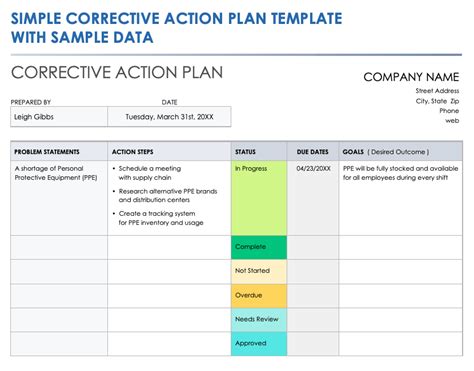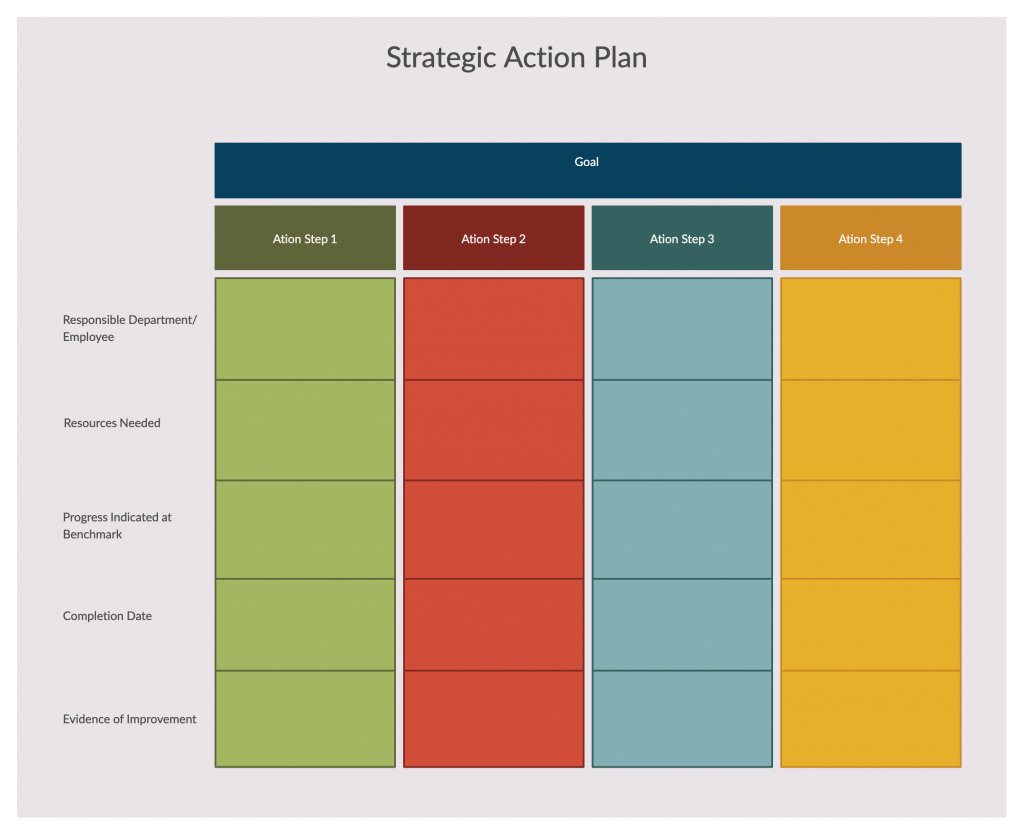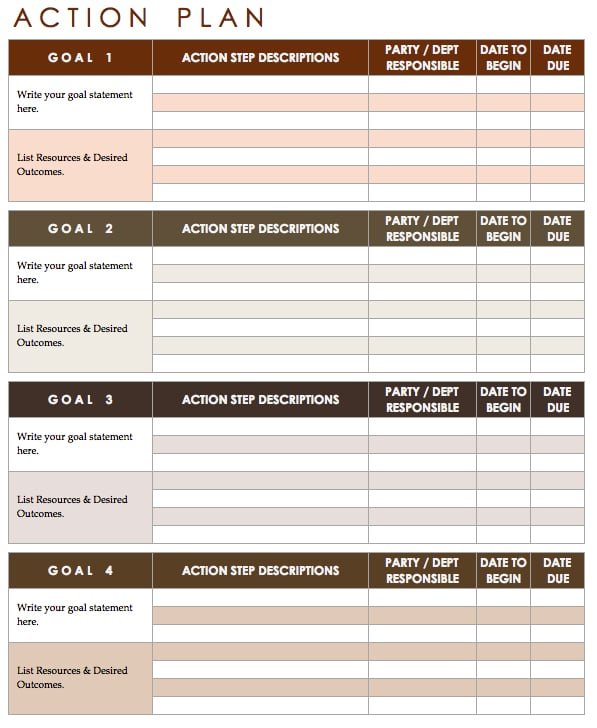10 Ways to Craft Effective Action Plans

Action plans are a powerful tool for individuals and organizations to bridge the gap between ideas and execution. They provide a structured framework to turn goals and objectives into actionable steps, ensuring a focused and systematic approach. This article explores ten essential strategies to craft action plans that are not only effective but also adaptable and aligned with desired outcomes.
1. Define Clear Objectives

The foundation of an effective action plan lies in establishing clear and well-defined objectives. Start by identifying the specific goals you aim to achieve. Objectives should be SMART: Specific, Measurable, Achievable, Relevant, and Time-bound. For instance, instead of a vague goal like “improve sales,” set a precise objective such as “increase online sales by 20% within the next quarter.” Clear objectives provide a focused direction for your action plan and make it easier to track progress.
Prioritizing Objectives
When setting objectives, it’s crucial to prioritize them based on their impact and urgency. Use techniques like the Eisenhower Matrix to categorize objectives into Urgent and Important, Important but not Urgent, Urgent but not Important, and Neither Urgent nor Important. This approach helps ensure that critical objectives receive the attention they deserve and are addressed in a timely manner.
Real-World Example
Consider a marketing team aiming to boost brand awareness. Their objective could be: “Increase brand visibility by 30% through targeted digital campaigns within the next six months.”
2. Break Down Objectives into Actionable Tasks

Once objectives are defined, the next step is to break them down into actionable tasks. Each objective should be decomposed into smaller, manageable steps. This process ensures that the path towards the goal is clear and feasible. For example, the marketing team’s objective can be broken down into tasks like:
- Conduct market research to identify target audience and preferences.
- Develop a content strategy for social media platforms.
- Create a timeline for campaign execution.
- Collaborate with influencers for brand promotion.
Task Prioritization
Just like objectives, tasks should also be prioritized. The MoSCoW Method (Must-have, Should-have, Could-have, Won’t-have) is a useful technique for this. It helps differentiate between essential tasks and those that are desirable but not critical. This approach ensures that the most important tasks receive the necessary resources and focus.
Example Task Breakdown
For the marketing team’s objective, a prioritized task list might look like this:
- Must-have: Conduct market research and identify target audience.
- Should-have: Develop a content strategy and create a campaign timeline.
- Could-have: Explore influencer collaborations and partnerships.
- Won't-have: Focus on this task only if time and resources allow.
3. Assign Responsibilities
An action plan becomes truly effective when responsibilities are clearly assigned. Identify the individuals or teams responsible for each task. This ensures accountability and a sense of ownership. It also facilitates better coordination and collaboration among team members. For instance, in the marketing team’s scenario, tasks could be assigned as follows:
| Task | Responsible Team/Individual |
|---|---|
| Conduct market research | Marketing Research Team |
| Develop content strategy | Social Media Team |
| Create campaign timeline | Project Management Team |
| Explore influencer collaborations | Partnerships Team |

Collaboration and Communication
Effective action plans require open lines of communication and collaboration. Ensure that team members are aware of their roles and have the necessary resources to execute their tasks. Regular check-ins and updates can help identify potential roadblocks and facilitate timely problem-solving.
4. Set Realistic Timelines
A critical aspect of crafting action plans is setting realistic timelines for tasks and objectives. Avoid the pitfall of over-optimism and be mindful of the time and effort required for each step. Break down the overall timeline into smaller intervals to track progress effectively. For the marketing team’s objective, a realistic timeline might involve:
- Week 1: Conduct market research and analysis.
- Week 2: Develop content strategy and create campaign timeline.
- Week 3: Execute the campaign and monitor performance.
- Week 4: Analyze results and make adjustments as needed.
Flexibility and Adaptability
While timelines provide structure, it’s important to remain flexible. Unexpected challenges or opportunities may arise, necessitating adjustments to the plan. Build in some buffer time to accommodate these changes and ensure the action plan can adapt to evolving circumstances.
5. Establish Key Performance Indicators (KPIs)

To measure the success of your action plan, establish relevant Key Performance Indicators (KPIs). KPIs are quantifiable metrics that provide insights into the progress and effectiveness of your objectives. For the marketing team’s objective, KPIs could include:
- Number of new followers gained.
- Engagement rate on social media posts.
- Click-through rate for campaign ads.
- Conversion rate from leads to customers.
Tracking and Evaluation
Regularly track and evaluate your KPIs to assess the performance of your action plan. This data-driven approach allows you to identify areas of improvement and make informed decisions. It also helps you communicate the impact and value of your efforts to stakeholders.
6. Identify Potential Roadblocks
Anticipating and identifying potential roadblocks is a crucial step in crafting robust action plans. Brainstorm possible challenges or obstacles that may hinder progress. For instance, the marketing team might anticipate issues like:
- Limited budget for influencer collaborations.
- Technical difficulties in campaign execution.
- Changes in social media algorithms affecting reach.
Mitigation Strategies
Once potential roadblocks are identified, develop mitigation strategies to address them. This proactive approach ensures that your action plan is resilient and can navigate unforeseen challenges. For the identified roadblocks, the marketing team could consider strategies like:
- Negotiate discounted rates with influencers to stay within budget.
- Conduct thorough technical checks before campaign launch.
- Diversify content strategies to adapt to algorithm changes.
7. Create a Supportive Environment
Action plans thrive in environments that encourage collaboration, open communication, and support. Foster a culture where team members feel empowered to contribute their ideas and expertise. Encourage knowledge sharing and provide resources and training to enhance skills. A supportive environment boosts morale and motivates individuals to contribute their best efforts.
Team Building and Morale
Regular team-building activities and recognition for achievements can boost morale and strengthen team bonds. This positive environment contributes to a higher level of engagement and commitment to the action plan.
8. Monitor and Adjust
Action plans are living documents that require continuous monitoring and adjustment. Regularly review the progress of tasks and objectives. If certain aspects are not meeting expectations, be prepared to make adjustments. This could involve reallocating resources, changing strategies, or even redefining objectives based on new insights.
Agile Methodology
Adopting an agile approach can be beneficial for action plans. This methodology involves breaking down work into small, manageable iterations and continuously improving based on feedback. It allows for flexibility and ensures that the action plan remains aligned with evolving goals and circumstances.
9. Foster a Culture of Continuous Improvement
Crafting effective action plans is an ongoing process that requires a culture of continuous improvement. Encourage a mindset where learning from successes and failures is valued. Regularly seek feedback and use it to refine and enhance future action plans. This iterative approach leads to more efficient and successful outcomes over time.
Learning from Feedback
Establish mechanisms for collecting feedback, both from team members and external stakeholders. Use this feedback to identify areas for improvement and make necessary adjustments to your action planning process.
10. Celebrate Achievements
Finally, don’t forget to celebrate achievements, no matter how big or small. Recognizing and celebrating milestones and successes boosts morale and reinforces a positive culture. It also motivates individuals to continue striving for excellence and contributes to a sense of accomplishment and pride.
Recognition and Motivation
Consider implementing recognition programs or rewards to acknowledge outstanding contributions. These initiatives can serve as powerful motivators and contribute to a positive work environment.
How can I ensure my action plan remains flexible and adaptable to changing circumstances?
+Build flexibility into your action plan by setting realistic timelines with buffer periods. Regularly monitor progress and be prepared to make adjustments based on new insights or challenges. Additionally, foster a culture of continuous improvement where feedback is valued and used to refine your approach.
What are some common mistakes to avoid when crafting action plans?
+Common mistakes include setting vague objectives, failing to prioritize tasks, and not assigning clear responsibilities. Avoid over-optimism when setting timelines and ensure your plan considers potential roadblocks. Remember, an effective action plan is well-defined, realistic, and adaptable.
How can I ensure my team is committed to the action plan and motivated to deliver results?
+Foster a supportive environment that encourages open communication and collaboration. Recognize and celebrate achievements to boost morale. Regularly seek feedback and involve team members in the action planning process to enhance their sense of ownership and commitment.



